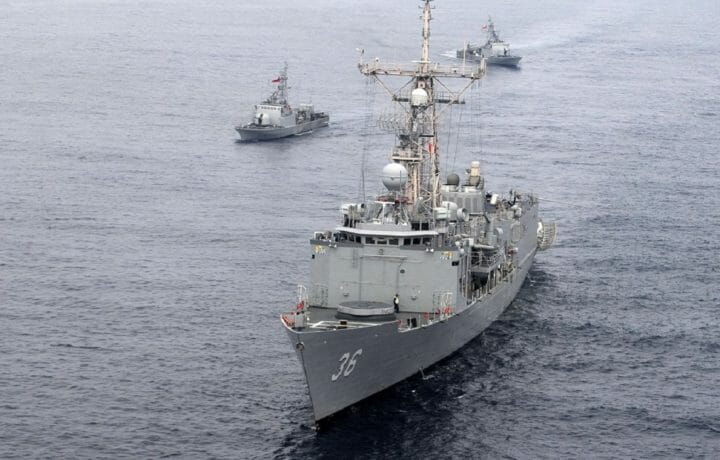Last week the Government Accountability Office (GAO) released a new report, “Navy Shipbuilding: Increasing Focus on Sustainment Early in the Acquisition Process Could Save Billions,” and it called out some examples of major waste in the U.S. Navy – highlighted by the fact that it costs $400,000 to unclog the new toilet system that is being used on the USS George HW Bush (CVN 77), latest Nimitz-class aircraft carrier, and the first-in-class USS Gerald R. Ford (CVN 78) aircraft carrier.
The GAO report noted that 70% of a ship’s lifecycle costs go toward operations and maintenance, and the report added that maintaining the Navy’s new ships could cost $130 billion more than planned. GAO found 150 examples of class-wide problems, and these include unreliable ship systems that could cost $4.2 billion to correct the 30% of the problems for which the Navy has data on estimated repair costs.
Over a seven-year period from 2012-2018, the Navy experienced over 27,000 days of unexpected maintenance delays across all of its ship classes, and these delays could increase sustainment costs and more importantly degrade readiness. The GAO examined nine shipbuilding programs that had delivered ships and submarines over the past 10 years, and this included speaking with operators and maintainers responsible for those ships that were identified to have sustainment challenges.
One such issue was the toilet systems on the CVN 77 and 78, which are similar to what is on a commercial aircraft. While these have been increased in scale to handle the demands of a crew of over 4,000 people, the systems have been regularly clogging – and the Navy has determined that an acid flush to the sewage system needs to be conducted on a regular basis.
The cost for each acid flush is around $400,000 and this is an example of an unplanned maintenance, one for which the Navy has no idea how often it will be required. Moreover, while this is a problem on the two carriers – it will likely be an issue on the still under construction Ford-class USS John F. Kennedy (CVN-79). The U.S. Navy currently plans to build up to 11 Ford-class carriers, which will gradually replace the existing Nimitz-class ships over the coming decades.
The Ford-class carriers were designed to be less expensive to operate than the previous classes, and had a projected cost of $77.3 billion over the next 50 years – roughly $1.54 billion annually. However, the GAO has found that the ships could cost $123 billion over the same period or roughly $2.46 billion a year. If the Navy builds all 11 of the Ford-class carriers the combined cost increase could be $10 billion a year.
Other issues have called out by GAO have included failed engines and faulty electronics.
As it stands the Department of Defense (DoD) is not required to offer detailed information about shipbuilding programs’ sustainment growth to Congress, and therefore it isn’t possible for lawmakers to understand the total costs for some of those programs. GAO found that shipbuilding programs’ requirements for sustainment reflect weaknesses with how the DoD policy even defines the requirements for ships.
“Sustainment requirements should influence acquisition decisions that determine the sustainability of a ship class, such as the ship’s design,” the GAO noted. “However, the Navy’s sustainment requirements do not provide key information on how reliable and maintainable mission-critical systems should be and, therefore, cannot adequately inform acquisition decisions.”
Recommendations for Executive Action
To address the issues brought up in its report, GAO has also offered 11 recommendations to the DoD and/or Department of the Navy.
Among these, the GAO recommended that the Secretary of Defense should change is definition for setting operational availability for ships in its Joint Capabilities Integration and Development System policy, which could add information that better defines that operation availability requirement by mission area in addition to the ship level and includes all equipment failures that affect the ability of a ship to perform primary missions.
In additional, the GAO called for the Secretary to change its definition for setting materiel availability for ships in its Joint Capabilities Integration and Development System requirements policy and this should include all factors that could result in a ship being unavailable for operations. This could include unplanned maintenance, unplanned losses and training.
The GAO also recommended that the Navy should set operational availability requirements that: (1) are based on failures that affect the ability of a ship to perform primary missions and (2) are set at the mission level instead of ship level.




